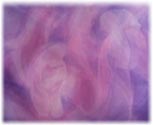|
|
 |
|
|
 |
|
|
This course is designed to give the students experiences in journaling the fluctuations encountered when trying to develop a creative idea into a completed work. In painting as inner work the focus is on the problem solving processes in the visual arts with regards to the shifting levels of epistemology in creative work. In color theory the route from theory and phenomenology of color to color as analog for soul pathology is traced through experiment and dialogue. In the creative process the students work with a published and well known poet who leads them through exercises which point out the challenges and rewards of patient wordsmithing.
|
 |
|
|
The processes of painting require that a clear problem solving process be developed in order to master the materials. This mastery is then set aside as the inner vision leads the painter into soul images which defy the materialization process. To link the material and the vision is the inner task of the painter. To accomplish this task requires a methodical and meditative approach to the work at hand which grows slowly, coupled with an exploratory journaling of the inner vision in which a dialogue is kept alive from day to day as problems arise and are solved technically. This block will make use of journaling skills developed in other blocks to maintain a running meditation on the painting process as well as focusing on the production of a work of art.
|

|
|
 |
|
 |
The fundamental idea in this block is the concept of the turbid medium in the work of Goethe. Scientific demonstrations of this work will enable the students to understand why Goethe chose yellow and blue as the basis for his primary colors. The next level of the work will consist of demonstrations of the concept of intensification which allows the primaries of blue and yellow to produce red and green. Further demonstrations of the effect of intensification will yield the concept of the twelve color spectrum. Once the dynamic of the twelve color spectrum is established these movements will be used to establish rigorous cognitive relationships between color, the temperaments and the transformative activities of the human soul. The remainder of the block is devoted to exploring the soul components of color by interfacing the colors with the twelve standard homeopathic constitutional remedies and the spectrum of flower essences.
|
|
 |
|
|
This block centers on the processes by which single words describing everyday objects can, with poetic vision, be transformed into poetic images and themes with universal application. The different voices found in the question, the statement, the command and exclamation are used to create a palette of words and sounds which reveal the subtle forces of the temperaments which stand behind them. The objects of daily life are given voices to express the temperaments and in this way the banal aspects of daily life take on a transcendent and transformative element. The creative nature of the word is explored through various group exercises of all types.
|
|
|
 |


